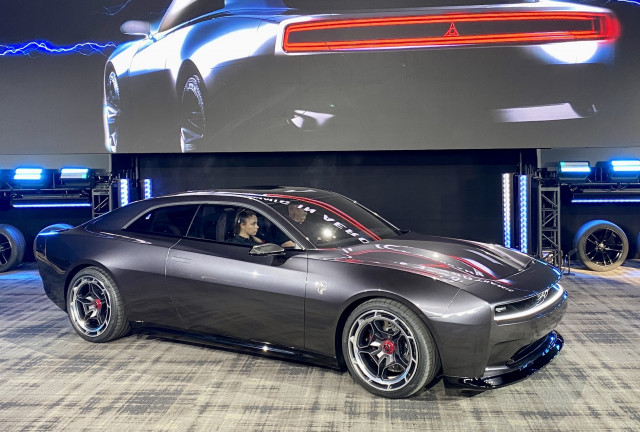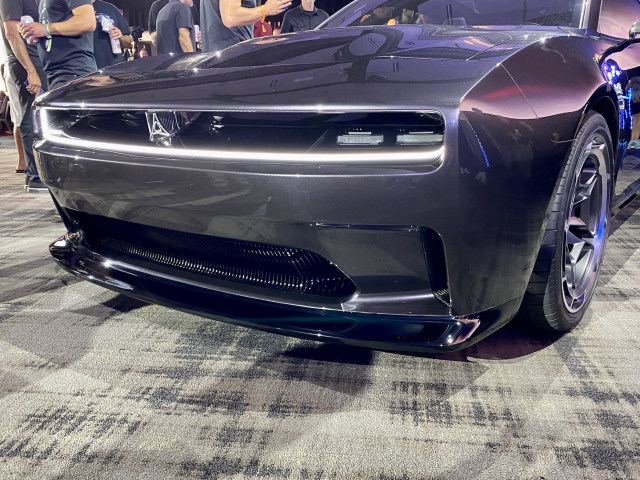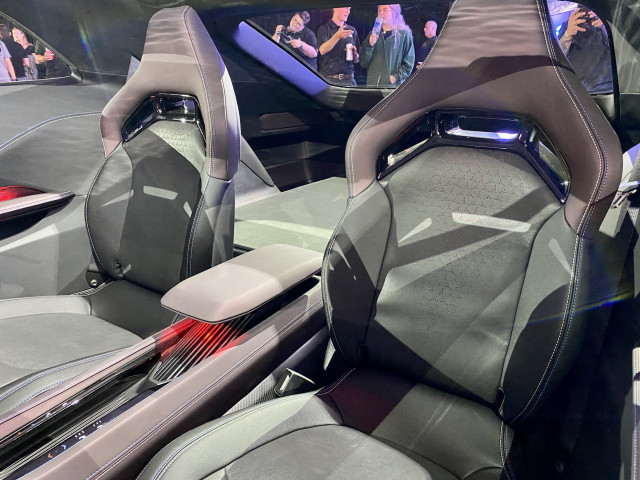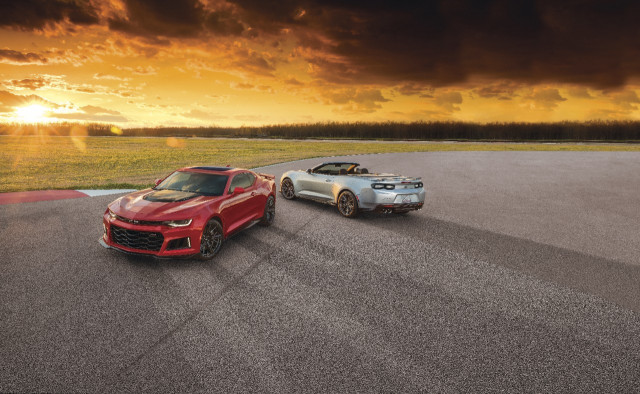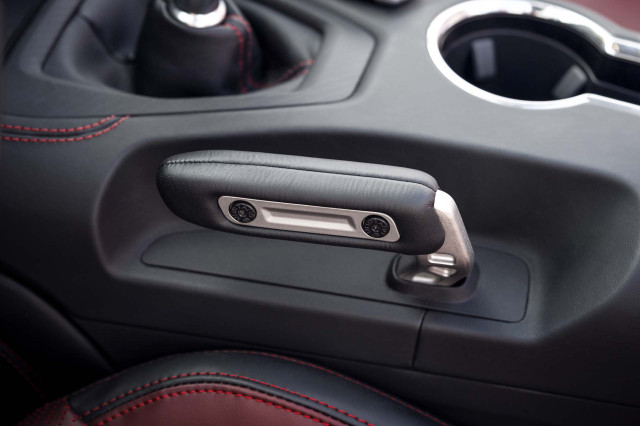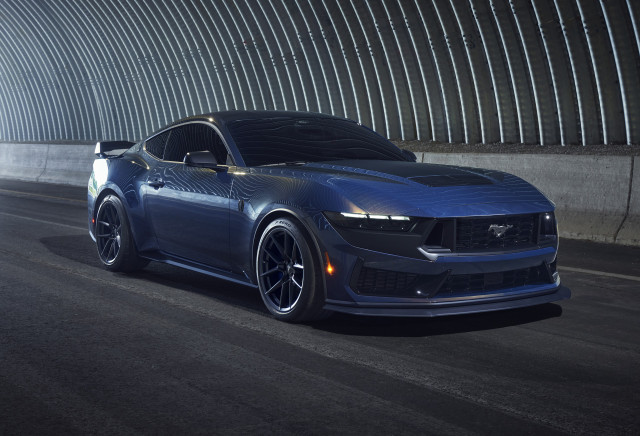Ford unveiled the 2024 Mustang on Wednesday night during the media preview of the Detroit Auto Show, but the biggest news for its legendary pony car might be what hasn’t changed. The coupe and convertible will not be electrified and will instead carry over updated versions of Ford’s 2.3-liter turbo-4 and classic 5.0-liter V-8.
That V-8 could be alone in the atrophying muscle car world. Production of the Dodge Challenger and Dodge Charger will end at the end of 2023, and with it the many V-8 variants wrenched out of Dodge SRT’s mechanical wizardry. Dodge plans to ditch combustion engines altogether in favor of a new take on the electric car. The production-leaning Charger Daytona Concept flexes muscle car traits with a roaring exhaust sound and multi-speed transmission packaged in a drop-dead gorgeous design.
Dodge Charger Daytona Concept
Dodge Charger Daytona Concept
Dodge Charger Daytona Concept
While we know the plans for Ford and Dodge muscle cars, Chevy remains inscrutable. Updates to the Camaro have been sparse the past couple of years, and rumors suggest production of the current sixth-generation Camaro will end in 2024 and it will be replaced by an electric performance sedan. With Chevy planning on selling full battery electric versions of the 2024 Chevy Equinox EV and 2024 Chevy Blazer EV alongside internal-combustion-engine versions of those popular crossovers, could Chevy carry two Camaros with different propulsion systems?
That seems unlikely. But it also seems unlikely that Chevy will leave Ford alone as the only builder and seller of a bona fide American icon, the V-8 muscle car. Which one is more unlikely?
Chevy has been playing follow the leader as it ramps up its Ultium battery propulsion system strategy. The Chevy Silverado EV followed the Ford F-150 Lightning to market, and the Blazer EV followed the Ford Mustang Mach-E to market in the booming electric crossover segment.
2022 Chevrolet Camaro (ZL1)
Does the market still support multiple ICE muscle cars? In 2021, Ford ceded its muscle car crown to the aging Dodge Challenger, which outsold the Mustang by about 1,900 units. Dodge sold roughly 54,300 Challengers to the Mustang’s 52,400. Camaro sales have been running at less than half of that. GM sold fewer than 22,000 Camaros in 2021 compared to around 50,000 in 2018 and 2019. When the sixth-gen Camaro launched for 2016, sales were above 70,000, as they had been for nearly the decade prior.
There’s no denying the Camaro slide, but would an automaker abandoned a segment it helped create that still accounted for 120,000 vehicles annually?
What is known for sure is the continuation of the Ford Mustang. Expected in dealerships early next summer, the 2024 Ford Mustang sports a more wind-swept style and hosts many technological upgrades. The seventh-generation pony car wears new body panels, according to Ford, and will have more downforce and a lower coefficient of drag from its predecessors. The low beltline, long nose, and short deck remain, but the rear haunches flex out in a more Camaro-like way, and Ford has updated its tri-bar lighting theme front and back.
Inside, every Mustang comes with a 12.4-inch digital instrument cluster configurable with five different themes. The most interesting theme is Fox Body that projects an analog look in homage to the third-generation Mustang that spanned the ’80s and courted a new generation of Mustang fans. It will be complemented by a 13.2-inch infotainment touchscreen, and on top models the screens will be housed under a single piece of glass.
A flat-bottomed steering wheel will be mixed with higher grade cabin materials with more soft-touch surfaces, contrast stitching, and a red upholstery option. An electronic drift brake presents a new take on an endangered feature, with a handle that turns 90 degrees instead of a pull-up hand brake. The key fob enables remote start and remote engine revving.
2024 Ford Mustang
Underneath the whizz buzz bang, the Mustang remains mostly the same, riding on the same platform since the sixth-gen version launched for 2015. The lower control arms, rear suspension links, and other suspension components have been updated, and the steering system has been revised for a quicker steering ratio, Ford said.
Ford didn’t disclose specs, but the engines receive updates that should boost power and increase fuel efficiency on the turbo-4. The 2022 Ford Mustang has a 310-hp 2.3-liter turbo-4 that can be upgraded to 330 hp with a Performance Pack.
The 5.0-liter V-8 channels more air with the latest update, and Ford suggests the upgrades should improve output beyond the current 450-hp rating for the GT and 470-hp rating in the Mach 1. A 2024 Ford Mustang Dark Horse aims for an output of 500 hp, and spawns a series of track-ready Dark Horse variants. A 6-speed manual or 10-speed automatic transmission carry over for the turbo-4 and V-8, and the rear wheels and only the rear wheels get all the torque.
2024 Ford Mustang Dark Horse
An optional Performance Pack can be added to both the GT and turbo-4 for greater handling and stability with a front strut tower brace and a limited-slip rear differential. Available add-ons with the Performance Pack include a magnetic suspension, wider rear wheels and tires, larger brakes, Recaro bucket seats, and an active exhaust.
Expect more news and specs, and perhaps an announcement from Chevy, in the months preceding the arrival of the 2024 Ford Mustang next summer.
Source: Read Full Article

